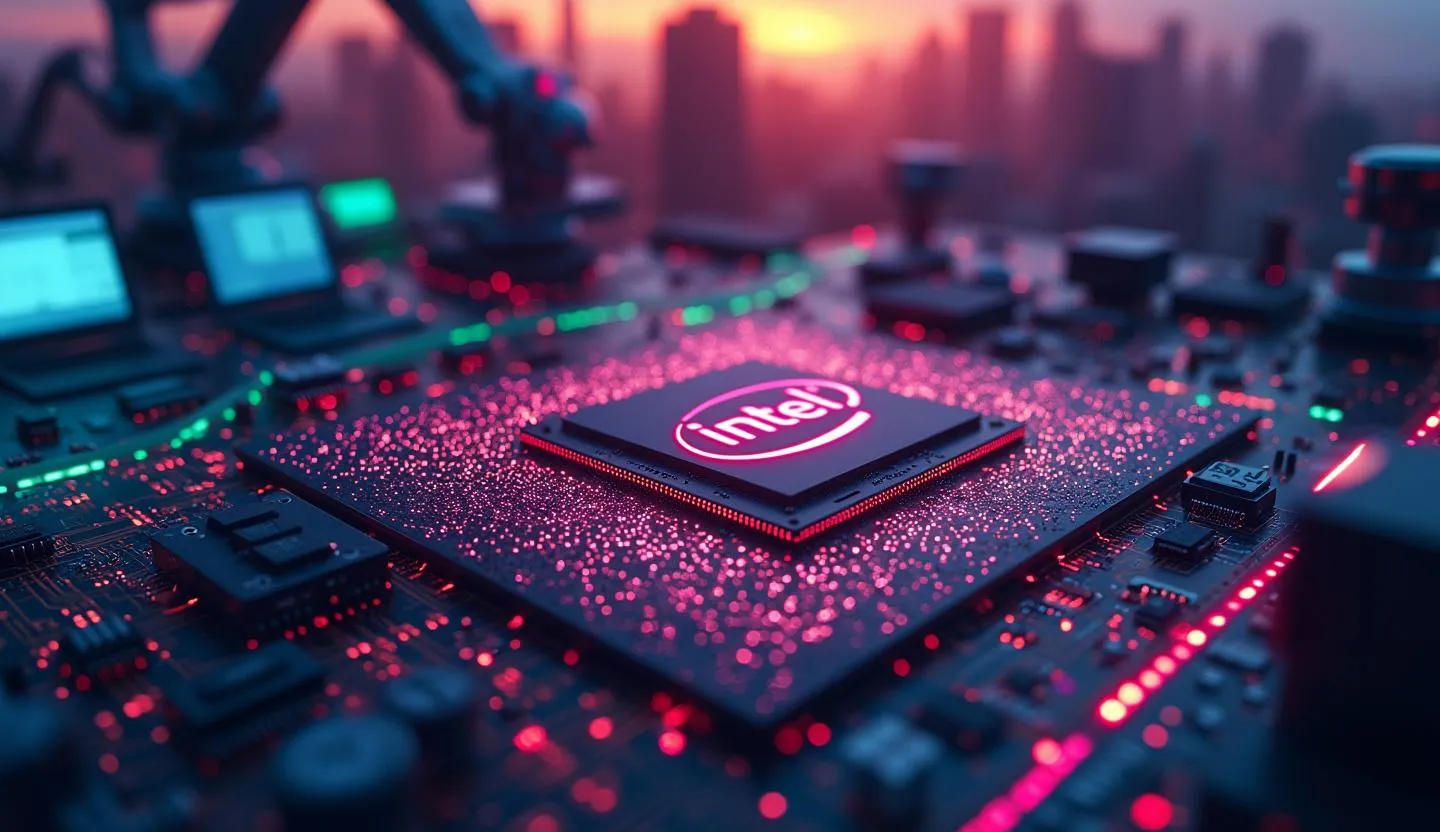A New Era for U.S. Semiconductors? Intel's Government-Backed Leap Shakes Up the Sector
In a trading session marked by sectoral volatility, few stories cut through the noise like Intel Corporation (INTC)'s surprising rally. The iconic chipmaker, long a bellwether for both technology and American manufacturing, has become the focal point of a dramatic policy shift: the U.S. government has taken an 8.9% equity stake in the company, signaling a bold—some would argue risky—push to secure domestic technology supply chains. Against this backdrop, Intel stands out as the top-performing megacap in the semiconductor sector today, jumping over 3% on eye-popping volume as investors and analysts alike digest the implications of Washington's intervention.
Key Takeaways
Stock Performance: Intel up 3.13% to $25.28 in early trading, with volume surging to over 9.5 million shares versus previous close of $24.80.
Catalyst: Trump administration announces U.S. government acquisition of an 8.9% equity stake in Intel, aiming to fortify domestic chip manufacturing.
Sector Impact: Broader chip sector mixed, but Intel’s move is the talk of Wall Street, drawing both praise and skepticism.
Latest News: White House signals this may be the first of several government stakes in critical U.S. industries, with National Economic Council Director Kevin Hassett suggesting a sovereign wealth fund approach.
Analyst Focus: Unprecedented state involvement prompts major Wall Street firms to reevaluate risk/reward and possible capital structure changes for Intel.
Intel’s Unusual Windfall: Why the U.S. Government is Betting Big on Chips
The Business—and Its New Backer
Intel, the world’s largest x86 processor manufacturer, has weathered decades of fierce competition and technological disruption. But today’s news marks a watershed moment for both the company and the sector: the Trump administration’s $billions investment for a nearly 9% ownership stake. The move, according to White House officials, is intended to “create a sovereign wealth fund” to shore up U.S. technological leadership and supply chain security in an era of rising geopolitical tension.
“The government’s stake in Intel is part of a broader strategy to create a sovereign wealth fund that could include more companies,” White House economic advisor Kevin Hassett told CNBC. “I’m sure that at some point there'll be more transactions, if not in this industry then other industries.” (CNBC)
The news has upended the calculus for Intel’s risk profile, capital structure, and long-term autonomy—issues that are already attracting analyst scrutiny and, perhaps more importantly, drawing the attention of global investors.
Turbocharged Trading: Performance Overview
Today’s session underscores the market’s dramatic response. Intel’s shares rose 3.13% to $25.28 at the open, with volume surging to 9,596,593—well above typical early-session averages. This price action comes against a tech sector backdrop that has otherwise been choppy and, in some corners, risk-off.
Metric | Value |
|---|---|
Current Price | $25.28 |
Change % | +3.13% |
Volume | 9,596,593 |
Previous Close | $24.80 |
1-Day Performance | +3.59% |
While the S&P 500 and broader indices are flat to negative, Intel’s outperformance is stark, reflecting market participants’ rush to reassess the company’s future under partial government ownership.
Rethinking Intel: Analyst and Market Sentiment
Analyst Reactions and Investor Debate
The news has divided the analyst community. On one side, some argue that government backing will provide Intel with an unparalleled competitive advantage—access to capital, government contracts, and potentially favorable regulatory treatment. On the other, skeptics warn of political interference, inefficient capital allocation, and the risk of Intel becoming a pawn in policy games.
Upgrades/Downgrades: Several major Wall Street banks have put their ratings “under review” following the announcement, with most indicating they are awaiting clarity on the terms and potential operational constraints of the government stake.
Target Price Shifts: No concrete target price changes have been issued yet, but volatility in options pricing suggests the Street is bracing for large moves in either direction.
Sentiment Shift: Social media and analyst chatter reflect a dramatic uptick in attention, with some institutional investors speculating that Intel could become the preferred supplier for all government IT projects—a game-changing tailwind if realized.
“The past week has seen many decrying the folly of government picking winners in business. But the Trump administration's announcement of an 8.9 percent equity stake in chipmaker Intel is a reminder that government mostly picks losers.” (Forbes)
Sector Shockwaves: Intel’s Move and the Broader Market Context
Policy, Geopolitics, and the Race for Tech Sovereignty
Intel’s rally comes at a critical juncture for the semiconductor sector. With global tensions escalating—especially between the U.S. and China—supply chain resilience has morphed from an industry issue into a matter of national security. The White House’s direct intervention signals a new willingness to wield state power in pursuit of technological dominance.
Government’s Broader Strategy: The White House National Economic Council’s Kevin Hassett made clear on CNBC and other outlets that the Intel investment is likely the first in a series of government stakes across strategic industries.
Market Implications: There’s immediate speculation about which companies are next, and whether this trend will spill over into defense, AI, or advanced manufacturing sectors.
Investor Reactions: Some institutional holders are cheering the move for its potential to de-risk Intel’s supply chain and provide new capital for R&D. Others are wary, citing potential for politicized decision-making and tighter scrutiny from both regulators and activist shareholders.
Conclusion: The New Face of American Tech Leadership?
Intel’s sudden status as a quasi-public entity is the most significant event in the U.S. chip sector in years. For self-directed investors, the implications are profound:
Intel now enjoys a level of government support—and scrutiny—unprecedented in its history.
The stock’s 3%+ rally on heavy volume signals both excitement and uncertainty as Wall Street recalibrates its expectations.
The broader semiconductor sector may soon see similar interventions, creating new winners and losers as government priorities shape the competitive landscape.
For sophisticated investors, the key will be to monitor not just Intel’s quarterly results, but the evolving relationship between government policy, national security, and American industrial champions. The next chapter for Intel—and for the sector—may be as much about Washington as about Silicon Valley.

.svg)
.svg)
.svg)
.svg)

.svg)

.svg)
















